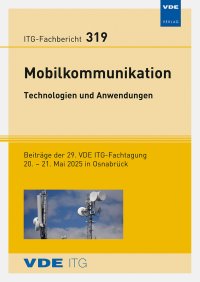Optimization of disaggregated 5G+ Networks considering Internal Traffic and QoS Requirements
Conference: Mobilkommunikation - 29. ITG-Fachtagung
05/20/2025 - 05/21/2025 at Osnabrück
Proceedings: ITG-Fb. 319: Mobilkommunikation – Technologien und Anwendungen
Pages: 6Language: englishTyp: PDF
Authors:
Joshi, Ameya G.; Nguyen, Tuan Khai; Bauschert, Thomas
Abstract:
Future disaggregated 5G and beyond networks are expected to carry a variety of service types with different QoS requirements and traffic patterns. Regarding the latter, besides Internet traffic, especially low latency local breakout traffic (terminating at provider-internal mobile edge servers) and Machine-to-Machine (M2M) traffic caused by direct (peerto- peer) communication between devices (e.g. machines, robots or cars) without any involvement of intermediate servers will grow significantly. In this paper, we address the problem of optimizing the user plane of such disaggregated 5G+ mobile networks with heterogeneous service demand so as to minimize the overall required node and link resource usage costs. We consider an O-RAN scenario and a given IP-based mid- and backhaul transport network where a subset (or even all) of the nodes are equipped with co-located compute resources. It is assumed that the locations of the Radio Units (RUs) and the placement of the virtual Distributed Units (DUs) on nodes with compute capability have been already defined in a previous radio planning and fronthaul optimization step. Thus, in our optimization problem, we focus on determining the locations of the virtual Central Units (CUs) and User Plane Functions (UPFs) as well as the traffic routing between DUs, CUs and UPFs given the traffic and QoS requirements of the different services, and aim to minimize the required node (computation and switching) and link (capacity) resources. To take full advantage of the flexibility of the disaggregated mobile network architecture, we allow traffic flow splitting between a DU and multiple virtual CUs as well as between a virtual CU and multiple virtual UPFs. Finally, we evaluate the feasibility and performance of our optimization approach by means of an example network topology and different traffic/service scenarios. Unlike existing solutions, our model considers other user plane traffic patterns than just Internet traffic, especially local breakout traffic to mobile edge servers and M2M traffic with different QoS requirements, as well as the proper selection of gateways (i.e. UPF locations) - capabilities that are highly relevant for the optimization of large industrial 5G+ networks.


